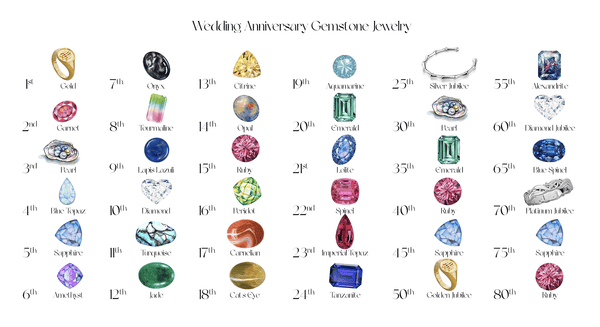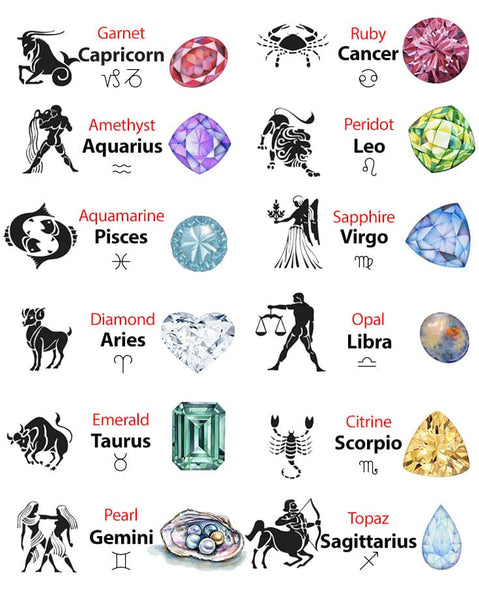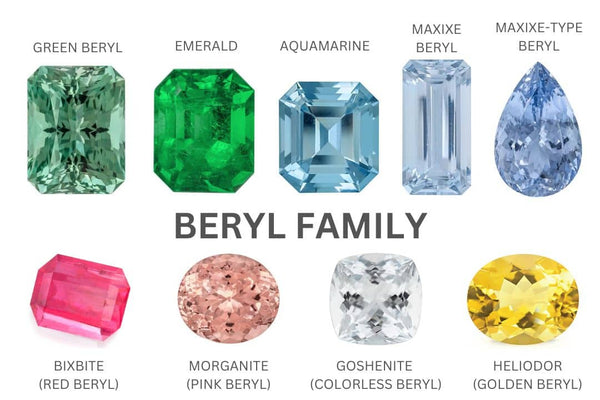Each pearl line has its own unique beauty, AME Jewelery advises you how to distinguish pearls, choose to buy pearls, preserve pearls, quality South Sea Pearl , Tahitian Pearl and Akoya Pearl ; Freshwater Pearl Freshwater Pearl .
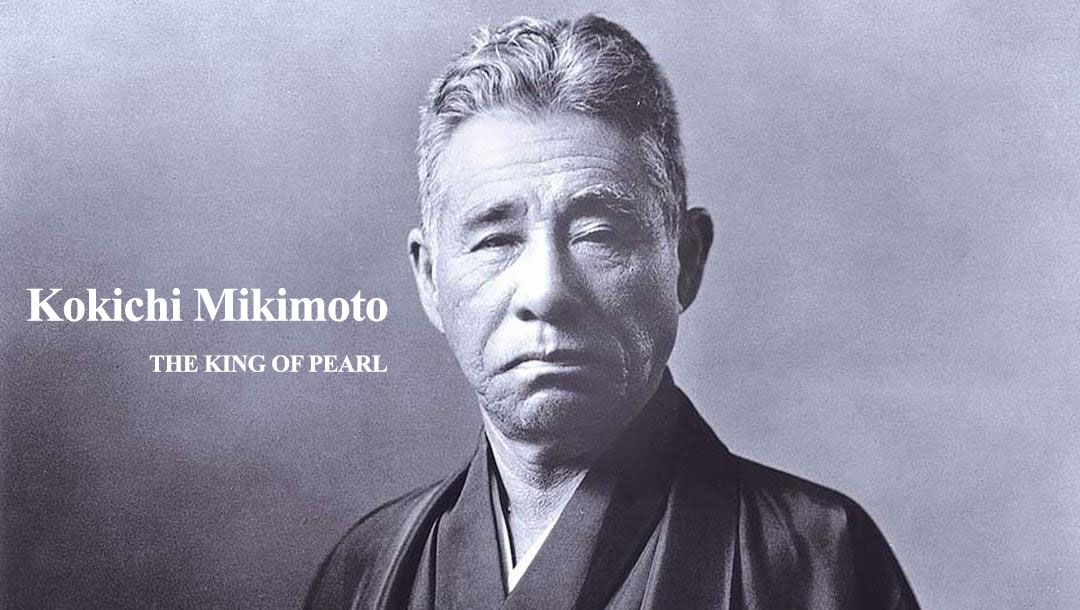
Kokichi Mikimoto: Inventor of pearl culture technique
According to the Orient, pearls are a symbol of couple's happiness, so they are often worn by brides on the wedding day, as well as often as a gift for the wedding.
Pearl is one of the special treasures classified as "five emperors, first queens" that nature bestows. The Five Emperors are: Diamond , Ruby , Sapphire , Emerald , and Marble . The best is the Pearl .
Different from the above 5 stones, pearls are born from a living organism, mussels secrete nacre that covers a foreign object when falling into the body, from which pearls are formed. The main composition of pearls is the mother-of-pearl Carbonate Calcium accounts for more than 90%, the rest is water and organic compounds that give life to the pearl. The mother-of-pearl structure is made up of thousands of thin layers of calcium carbonate crystals, which influence the color, luster, stability and elasticity of pearls, giving pearls a distinctive color. show very vividly.
People liken pearls as a symbol of purity, shimmering shine. In addition, pearls are also the embodiment of the god of love, bringing good luck, understanding in the soul and emotional balance.
HOW TO IDENTIFY THE PEARL
Pearls are one of the Ocean's most beautiful gifts. If you are thinking of buying Pearl jewelry, or have a family heirloom made of Pearls, it is important to know if it is a Pearl or not. Today's pearls have both natural Sea Pearls and cultured (or cultured) pearls in the sea or in rivers and lakes.
AME Jewelery advises a number of ways to help you identify Pearls as follows:
Minor imperfections of pearls
Pearls are rarely "perfect", but more often they will have minor defects or irregularities in shape. On parts of the pearl, the outer nacre shell also reflects light differently. Most synthetic jade is always "too perfect", has a perfectly round spherical shape and has a uniform luster over the entire surface, without dents or any other defects. Although it is rare to find perfectly round pearls, it is impossible for a necklace to be made from all pearls of equal perfect roundness.
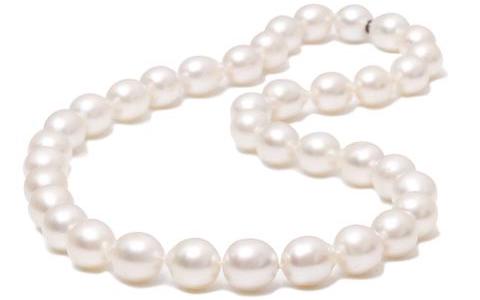
If you see any string with identical round and shiny pearls, it's almost certainly man-made.
Check if the pearls are perfectly round
As a product of nature, each pearl is slightly different, just like snowflakes and fingerprints. Most pearls are not perfectly spherical, but they are slightly oblong or have minor defects. If you find your pearls are perfectly round, it is most likely artificial.
Pearls have the ability to be perfectly round. But such cases are "very" rare and often sell for very high prices.
Not sure if your pearl is perfectly round? Carefully roll the pearl on a flat surface, remembering that if the shape is not perfectly round the pearl cannot roll in a straight line.

Pearl shape - Pearl shape
A string of pearls looks round when you wear them, but they are actually slightly different in size and shape, and are rarely completely round. So there cannot be a string of pearls where the pearls are perfectly round, of exactly the same size and shape.
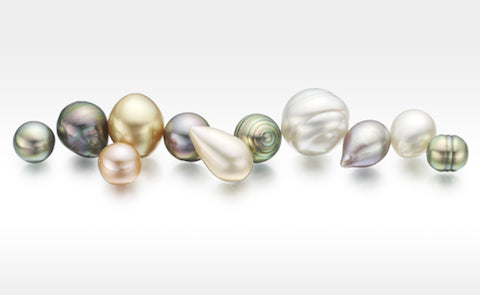
Pearl surface - Pearl surface
Pearls tend to be imperfect on the surface, and may have goosebumps, or small holes, or blemishes of some kind. With good quality pearls, the defects will be very small, and almost difficult to see with the naked eye.

Use a microscope to look for scaly surface structures. You can use a jeweler's magnifying glass with 30x magnification, but it is best to use microscopes with a magnification of 64x or more. The pearl's surface has a maze-like scale, and the overall look is like a topographic map. It is this scaly structure that creates the "slightly rough" face of the pearl as shown on the right.
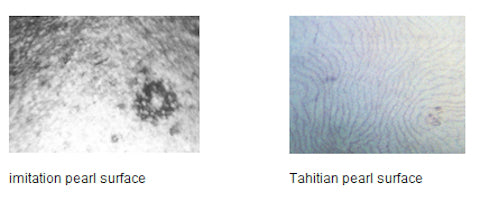
In contrast, artificial pearls often have a surface composed of relatively uniform protrusions, a bit like the moon's surface with many pits as shown on the left.
Pearl luster - Pearl luster

Jewelers often use the word "gloss" or "water" to describe the light reflected from precious stones. Gloss is the main factor that makes pearls shimmer, so good pearls must have a bright and sharp luster, making them capable of glowing when light hits them. If you look closely you will see your reflection on the pearl's face. The pearl's luster or water feels very smooth, the ivory color of the pearl is very beautiful, so the ancients have a saying: "in ivory white pearl".
The weakness of this test method is that it cannot distinguish low-quality pearls, because they have a dull, dull luster like man-made goods. You should compare the results of the different tests in this article to make a more accurate distinction.
The drill hole of pearl
Sharp bore edge. Pearls usually have very sharp bores (like hollow cylinders), around which pearls look sharp, smooth and smooth.

Whereas imitation pearls have rough or rounded edges, boreholes may have a curved edge facing outward, paint or coating chipping around the hole. During use, the pearls collide with each other and cause the outer coating to peel off around the drill hole. If you can see patches of glass or plastic underneath, it's definitely man-made.

However, some aged, worn and aged pearls may also have rounded edges.
Put the pearls together
Hold the pearls with your fingers and gently rub them together, then try to feel the very little friction between them. Pearls will often create little friction when rubbed because the outermost layers of mother-of-pearl are not completely smooth. In contrast, synthetic jade will have a very smooth outer coating so they will slide over each other when rubbed.
Look closely at the hands after doing the experiment. When rubbing two pearls, the outer shell will be slightly abraded, so you will see some fine white powder that is the mother-of-pearl powder. Wipe away the dust, the surface of the pearl remains unchanged; because pearls are formed by layers of nacre that accumulate over a long period of time.
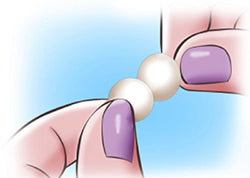
Rub the pearl against the teeth in the front of the jaw
Hold two or three pearls firmly with your index finger and thumb, then gently press them against the sharp edge of the front teeth, remembering to move back and forth. Pearls always have a "slightly rough or rough" face, which is due to very small scaled imperfections in the outermost nacre. Artificial pearls made from glass or plastic will often have a "nearly perfect flat" surface.
You should brush your teeth before doing this experiment to make sure the teeth are completely clean, as food residue on the teeth can give false results.
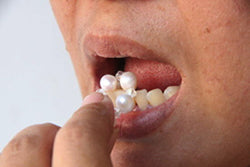
Bite the pearl lightly with a little pressure. Pearls have a sturdy construction with a thicker layer of mother-of-pearl so they won't be damaged by a little force. If scratched, peeled off the coating is artificial jade.
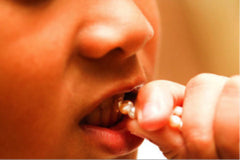
Feel the coolness to the touch:
For this method you need to leave the pearl outside for a while, do not try with the beads you are wearing. Hold the pearls in your hand and focus on how you feel when your skin comes into contact with them. You will feel very cool if they are pearls, before becoming warmer after a few seconds. This feeling is similar to when you walk barefoot on the marble floor.
In contrast, jade made of plastic always stays at room temperature and warms up very quickly.

Attention: Good quality glass artificial jade also feels "cool", so compare with the results of other test methods if this is the first test.
Feel the weight of the pearl when holding it in your hand
Carefully bounce one or two pearls in your hand to see how heavy they are. Most pearls usually feel quite heavy for their size, whereas man-made (especially if made of plastic) feels insignificantly light.
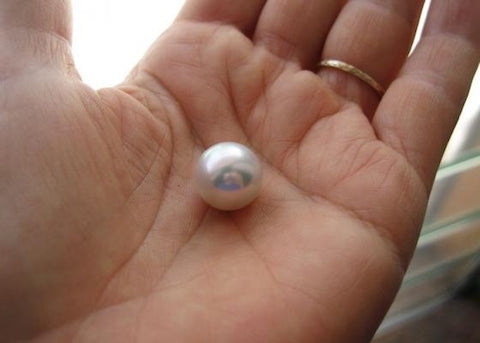
This method is not perfect for a very understandable reason, it is not easy to judge the mass of a few small pearls. If you want a more accurate result you should compare the mass of your pearls with other pearls you "know" to be cultured or artificial pearls. No matter how certain you are about the mass of a pearl, you should confirm the result with other testing methods.
CONSULTING PEARL BUYING
Pearl always brings elegance and beauty to its owner. Choosing a pearl necklace or beautiful earrings is extremely exciting.
Buying Pearls is not simple, there are many things to consider before buying. AME Jewelery advises several ways you can find the right Pearl.
Pearl types - Pearl types
Natural pearls are now very rare, mainly sold to collectors and rarely used as jewelry. Pearls on the market are supplied from pearl farms.
Cultured pearls are of two types:
Saltwater cultured pearls include:
- Akoya Pearl - Japan, China, and Vietnam
- Tahitian Pearl - French Polynesia
- South Sea Pearl - Australia, Indonesia, Myanmar and the Philippines
In Vietnam, Sea Pearls are cultured in Co To, Nha Trang and Phu Quoc islands, but not much are left due to low productivity and polluted seawater.
Freshwater cultured pearls
Freshwater Pearl is made by mussels that live in lakes, rivers and other freshwater places - China and America.
Pearl quality - Pearl quality
The pearl culture process produces pearls of different qualities and is evaluated based on the following criteria: luster, coating, shape, size, colour, surface quality.
Pearl luster - Pearl luster

Gloss is considered the most important factor in evaluating pearl quality. This is the term used to describe the reflectivity of the pearl's surface. The higher the pearl luster, the more it shines, reflects light and objects more clearly. For a pearl to have a deep mirror reflection, it must have a very smooth surface created by multiple layers of mother-of-pearl shells. Sea pearls are usually brighter than freshwater pearls. Low-gloss pearls appear matte or chalky white, rather than vibrant and shiny.
Pearl coating thickness
The second most important criterion of pearl value is the thickness of the mother-of-pearl layer. A pearl is made up of layers of substances called nacre - calcium carbonate and protein. The thicker the mother-of-pearl layer, the more durable and valuable the pearl. The average thickness of a pearl ranges from 1mm to 3mm.

The mother-of-pearl layer thickness cannot be easily assessed with the naked eye, but can be determined by the time it takes to culture the pearls until harvest.
Pearl shape - Pearl shape
All are implanted with round kernels with the aim of forming round pearls. But in fact, only about 5-10% of harvested pearls reach round quality, so they are very rare and expensive.
As a rule, the more perfectly round pearls are worth many times more than other types.

Pearl size - Pearl size
You should not buy a Pearl that is too big or too small to wear. The common size in pearl jewelry is around 7.5mm-9.5mm. Girls should wear pearls in size 6.0-7.0mm for most ages.
Larger Tahitian and South Sea pearls should be in the size range of 9.0 - 13.0mm, or opt for a larger size for Luxury Jewellery.
Like Diamonds, Large Pearls cost a lot more than smaller ones. For example, a string of 9.0-9.5mm Akoya Pearls costs 10 times more than a similar 6.0 - 6.5mm string of Pearls. So, keeping in mind the pearl size is very important when shopping for a high quality pearl necklace.
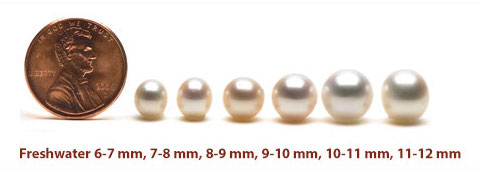
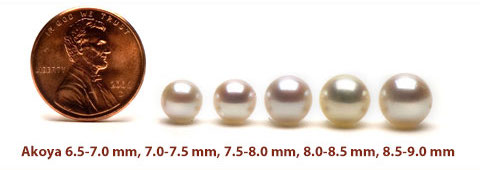
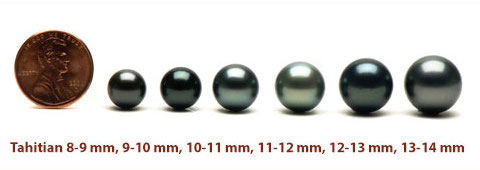

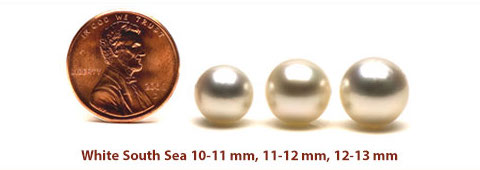
Pearl color - Pearl color
Pearls have many colors to choose from according to preferences, the value is also different depending on the pearl line
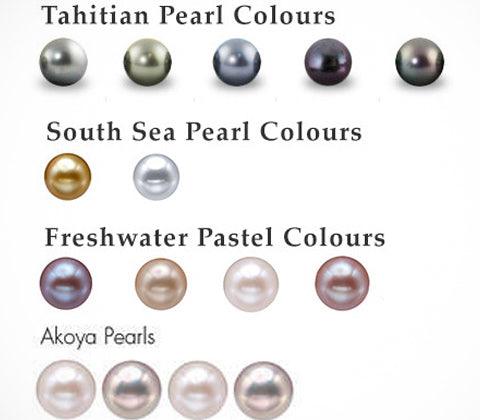

Pearl surface quality - Pearl surface

Pearls are graded on a scale from A to AAA, with AAA being the highest grade. AAA quality pearls will have a smooth, spotless surface to the naked eye.
AAA : Perfect on at least 90% of pearl surface
AA+: Perfect on at least 80% of pearl faces
AA : Perfect on at least 70% pearl face
A+ : Perfect on at least 40% pearl face
A : Perfect on at least 30% pearl face
PEARL PRESERVATION
With proper care, Pearls can last a lifetime. The best way to care for pearls is to avoid contact with household chemicals including perfumes, cosmetics, hairspray, vinegar, chlorine, ammonia, etc.
- You should wear Pearl jewelry last in your accessories when going out and first when you get home.
- Wipe the Pearl with a soft cloth and store it separately from other jewelry to avoid scratching its smooth surface.
- Pearl jewelry should also be washed periodically with soap and warm water.
- Always use a clean, soft, damp cloth to wash and dry the pearls.
- To prevent scratches or damage, it is recommended to wrap pearls in a soft cloth before placing them in a jewelry box.

